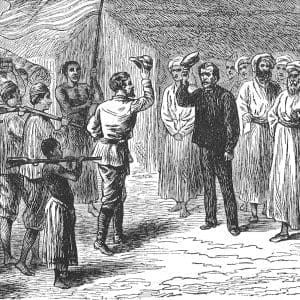This will be the first in a series of posts about Knowledge Management (KM) tools that are a bit different than traditional documents, presentations, and diagrams. I’m not talking about mind mapping, wikis, and other web 2.0 tools currently in vogue; these “alternative tools” have been around for a while, but I’ve only just started using them, with great success.
Actually, it’s not as much about new tools at it as it is about new media; I am specifically thinking about audio and video.
Audio Files for Audiophiles
I know podcasts have been around for a few years; many would consider them a Web 2.0-type artifact. I’ve never been a fan; too much device shuffling, and I never really understood their allure (aside from being the next really interesting widget you could stick on your web page … check it out, an MP3 file of me speaking …)
<aside> I am a big fan of old-time radio, and I do appreciate audio-only entertainment. It is true what they say; the pictures in your mind are always better than the pictures on the screen. My vision of Sam Spade scraping the black paint off the Maltese Falcon will always be better than anything than John Huston could come up with. And if you want to hear a real sitcom, listen to Jack Benny … the man was a genius. </aside>
For business use … well, it just didn’t click with me. I tried some of the Gartner Group CDs, with taped analyst discussions of technical topics … something good for the commute in to work, but I’d really rather listen to news on the radio. I don’t think technical topics translate well to audio-only, because I often need to read, reread, and then read again the paragraphs trying to explain Perl quoting syntax and string interpolation (single vs. double quotes).
However, I have discovered a very powerful use for audio files. I am a big fan of keeping journals on the conversations and meetings through the course of my day. Maybe I’m getting older, and the memory is failing (as I am often told by my daughters). There are certainly a large number of projects and business areas that I am responsible for, and I need to be able to keep all of my ducks in a row, and remember all of these conversations and my follow-up to-dos. Maintaining my daily journals does a lot for me; by reliving the day’s events and capturing the high points of conversations, the meaning and importance of discussions and decisions – it helps embed the key stuff into my memory (kind of like copying and re-copying your notes after a lecture).
I make a point of keeping these journals in searchable documents on my hard drive; when I try to remember who said what about the latest supply chain planning project, I can do a Copernic search to find all relevant conversations. The trick, of course, is to capture all the salient points of these conversations, so they can appear in a search; and when you have 10-15 substantive conversations over the course of a day, well, sometimes it can be difficult to remember at all. In addition,it’s difficult to participate in a conversation while trying to type or write down notes – it’s all too easy to lose track of the interesting bits.
But then, I got a digital voice recorder – a nice Olympus DS-30, simple and effective. Of course, I must let everyone in the meeting know that I am going to be taping the conversation, but most folks don’t mind – I’ve never been asked to turn it off.
Which is great, because now I can participate in the conversation and take relatively few notes on paper. I rely on my recorder to capture all the important stuff from the meeting; my daily journal session is spent listening to the tapes (I actually call them tapes … how quaint), and capturing the key stuff.
There is a self-improvement angle to this as well. When I get going, especially around technical topics, I talk fast, in incomplete sentences, and I sometimes mumble (a “low talker“). I am very self-aware of this, and have worked hard over the years to get better at it. Hearing myself on tape is enlightening; I get a much better appreciation of how I sound, how people actually hear me. Within days of using the recorder, I know I think a lot more about my speech habits and have made changes.
<aside> The playback software allows me to adjust the playback speed (without changing the pitch), which is quite helpful when reviewing a number of meetings. However, when I listen to myself talk at normal speed, I have a different impression of what talking fast really sounds like (hhh). </aside>
I don’t keep the tapes – there is little point. Again, I’m a big fan of search (my nominee for the KM killer app); I still get a kick of how all of my office documents, diagrams, and PDFs can be indexed. I can’t, however, index the content of these audio files – the best I can do is capture some description of the conversation in the file header, but that’s typically limited to a very short note. I can also add index marks,so I can jump right to the interesting parts of the conversation – more often than not, that’s way more trouble than it’s worth.
Still, the voice recorder is a very handy way of making sure I catch all the key bits of conversation before I make my journal entries for the day, and quality of those entries has definitely improved.
See the whole Alternative KM Tools series:
- (1 of 3) Audio Files for Audiophiles
- (2 of 3) Typing as Fast as I Can Talk
- (3 of 3) Follow Him Around






This Post Has 0 Comments